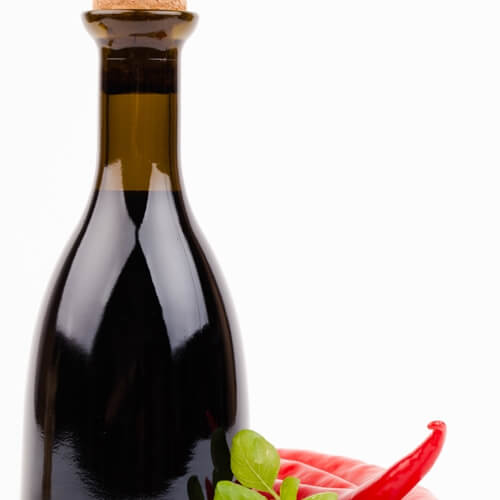Cooking with vinegar
Vinegar is one of those do-all kitchen items. Much like baking soda, there are numerous vinegar recipes and techniques that have been passed down for generations on how to use the product in nearly every area of your life. Think of this as food’s Windex, as in “My Big Fat Greek Wedding” (Windex was used for all cures from window cleaning to pimples in the film). Many use it as a fabric softener, window cleaner or to get a drain unclogged. In the kitchen, vinegar has often been relegated to dressing recipes or pickling, but chefs are trying to break it out of this stereotype. As online culinary school students know, vinegar can truly do it all.
Vinegar has been used by professional cooks to enhance the flavor profile of many dishes for years. It is such a well-rounded product partly because it comes in a wide variety of types. These many versions include cider vinegar, white and red wine vinegar, sherry vinegar, balsamic vinegar and distilled or white vinegar. All of these various vinegars are made with specific flavor profiles so they will accurately blend with recipes.
“Vinegar brings out the intrinsic nature of whatever you’re cooking,” James Peterson, author of the cookbook “Done,” told The New York Times. “You’ll taste more of the other flavors.”
Peterson often adds vinegar to a sauce to balance the flavor profiles. Especially in acidic sauces or soups, vinegar can make a dish more palatable. Food writer David Lebowitz tends to use vinegar in pie or other dessert dishes like cobbler. Not only does a balsamic vinegar enhance a fruit’s flavor with a contrast of tastes, but it can also be used to make a pie crust flaky. If you are cooking a sauce or a marinade that seems to involve flavors that battle each other for the spotlight, a teaspoon of vinegar can help to give these different tastes their own solo in the chorus.
Try experimenting on a recipe of your own with vinegar, testing the different effects each variety of vinegar has on the flavor of the dish. If cooking with vinegar is new to you, try the simple recipe below to taste how it can elevate the flavor of fruit.
What you’ll need:
- Ripe fresh peaches
- Balsamic vinegar
- Black pepper
- Sugar
Cut your peaches into thick slices. Add 1 tablespoon of vinegar per peach and toss in a dash of pepper and sugar. Mix until the peaches are coated, divide into small tasting bowls and enjoy!


